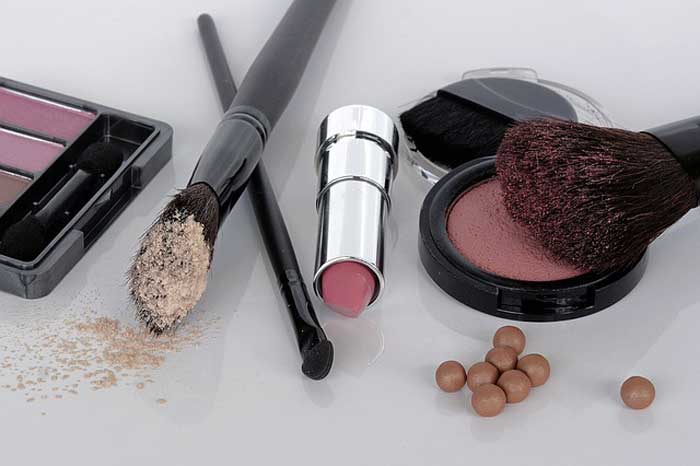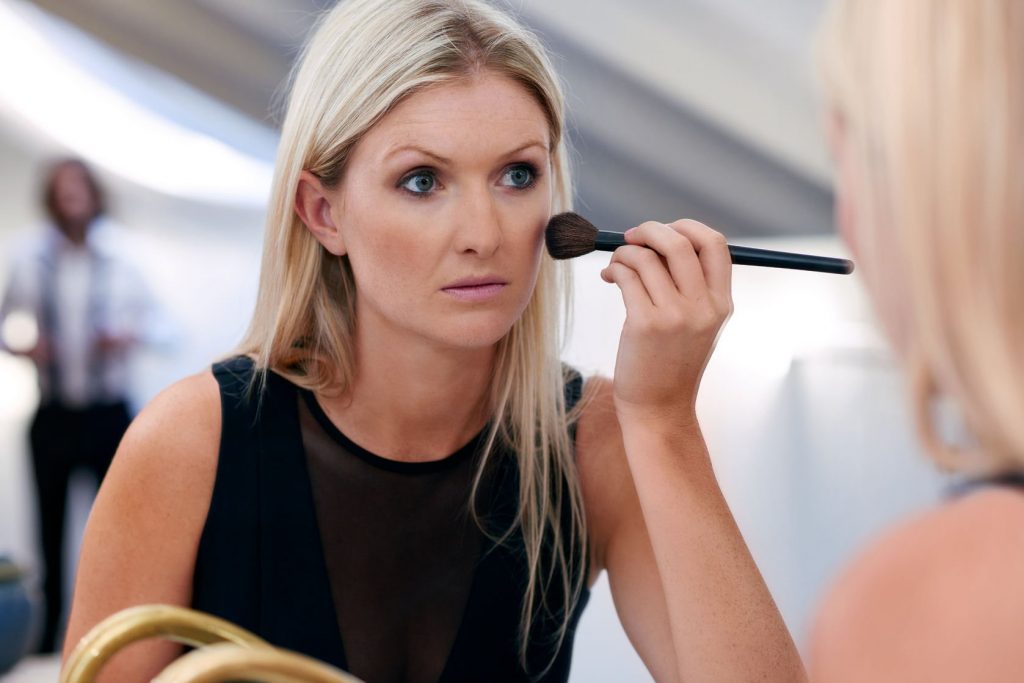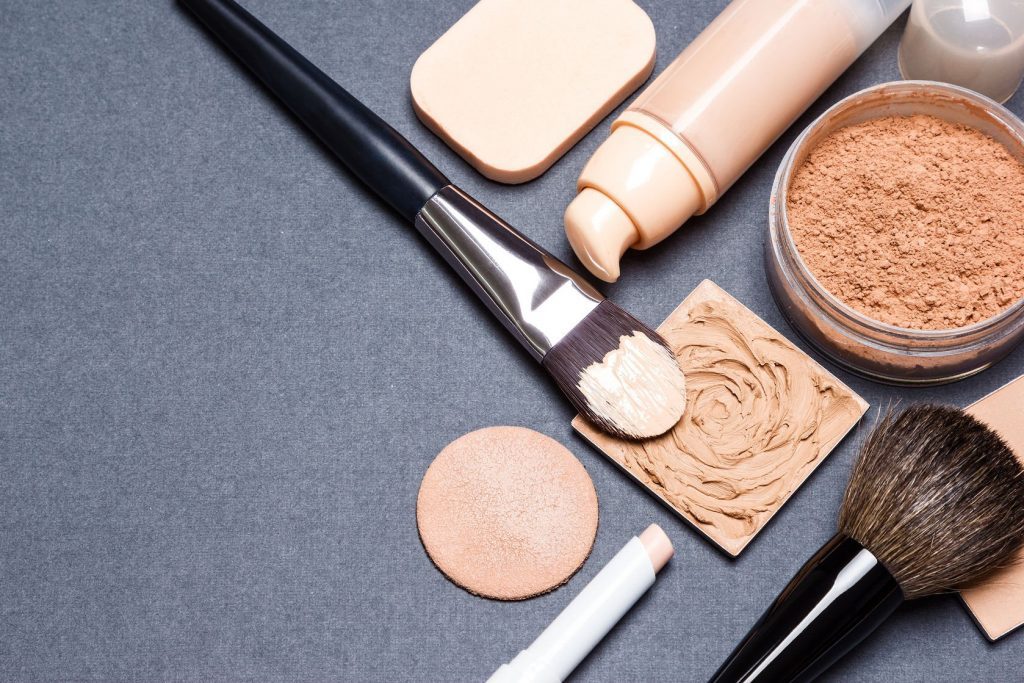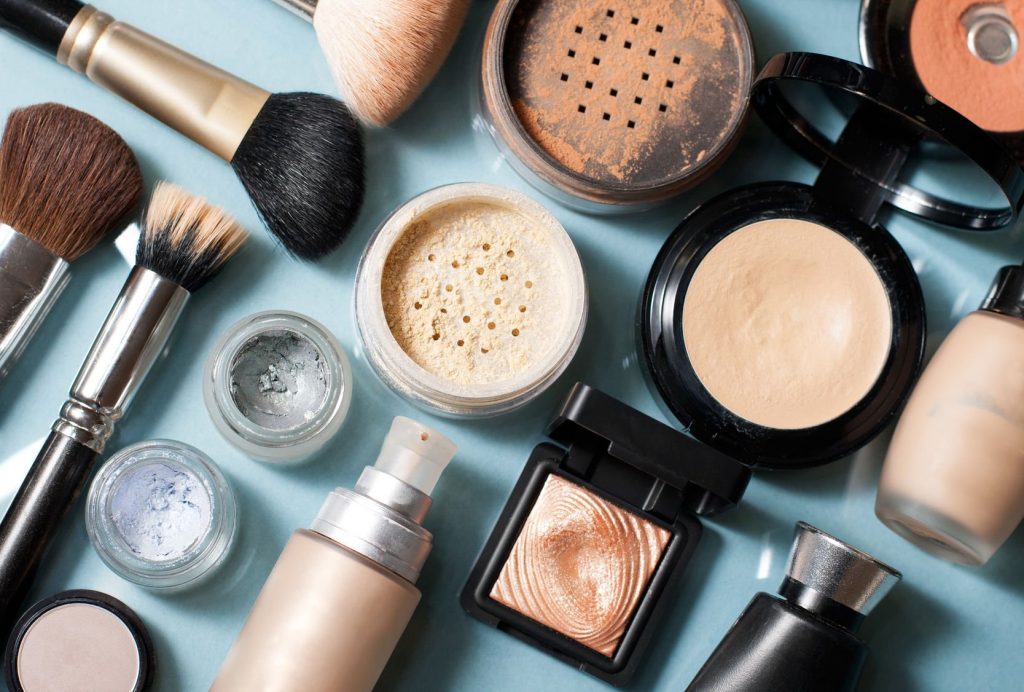Sophie Addison, a popular blogger and skincare expert wrote this article. Check her out on Facebook, and Pinterest.
The popularity of makeup products today seems to be greater than ever before in human history. Business Wire states that the global cosmetics market reached a staggering $460 billion in 2014 alone. Experts anticipate that the global market for beauty products will continue to rise at an annual rate of 3.8% in the next five years.
We’re all witnesses to just how big the beauty industry is. Just thinking about the huge number of beauty products we see today can be overwhelming. Beauty is taking over even social media sites like YouTube that had a total of 123,164,115 beauty subscribers in 2015. These numbers speak for themselves, and what they’re telling us is that we are becoming a society of makeup junkies.
Humans have used makeup for at least 5000 years for the purpose of enhancing features that are thought of as attractive and hiding perceived flaws such as the first signs and symptoms of wrinkles. And although there is nothing wrong with wanting to beautify yourself occasionally, makeup becomes a problem when it creates psychological dependence.
A study carried out by The Renfrew Center Foundation found that almost half (44%) of all women said they felt unattractive without makeup. But the problem with relying on makeup to build your self-esteem does not end there. More and more medical practitioners, scientists, and consumers are becoming increasingly concerned with how makeup affects our physical health.
The Dangers Of Makeup Products

All makeup products, from foundations to setting powders, contain a great number of chemicals, some of which may even be dangerous to your health. The way certain chemicals in makeup interact with our skin can lead to skin dryness, flaking, and even allergic reactions.
But what is concerning is the fact that these chemicals have the ability to penetrate the deeper layers of our skin and enter our bloodstream. If these chemicals happen to be toxic, then chronic exposure to them presents a significant health risk.
Makeup has been a realistic danger for quite some time now. A study published in the Journal of Archaeological Science found that the bones of Japanese children from the Edo period contained levels of toxic metals a dozen times higher than the safety threshold.
The researchers said that the cause was the use of white facial powder by breastfeeding women that contained dangerous levels of lead and mercury. Another study from 1991 collected samples of kohl eye makeup from third-world countries found that many samples had dangerous levels of lead as well.
But things don’t seem to be much different these days. A recent study released by Breast Cancer Fund (BCF) for their project The Campaign for Safe Cosmetics found that almost half of all kids’ Halloween makeup products tested contained banned and harmful chemicals.
However, most of these toxic chemicals were found at very low levels and as such should not have immediate adverse health outcomes. Furthermore, makeup can be bad for the state of your skin and those wondering how to get rid of acne are often faced with a dilemma of wearing or not wearing makeup as makeup is known to clog pores.

Some of The Harmful Chemicals Found By The BCF Study
Cadmium
A soft, bluish-white metal that studies have linked to kidney failure, bone disease, and even cancer. Researchers believe that cadmium becomes toxic at levels well below limits set forth by the World Health Organization.
The FDA conducted a test of heavy metals found in popular cosmetics (see here). Cadmium was found in several Estee Lauder, Jafra Cosmetics, l’Oreal, Yves Rocher, Revlon, Proctor and Gamble, Mary Kay, and Jane & Co products including powder eye shadows, cream eye shadows, eye primers, and foundations (source).
Toluene
A paint-thinner that studies suggest can damage the nervous system and lead to neurological disorders such as dementia. Toluene is found in several nail products as well as some hair dyes (more information here).
Benzophenones
Used in products such as foundation to protect against UV light. An article published in Dermatitis, states that benzophenones can cause allergic reactions such as skin rashes and even anaphylactic shock. Benzophenones are found in lip balms, foundation, nail polish, fragrances, shampoo, conditioner, hairspray, and baby sunscreens (more information here).
Parabens
These chemicals are added to cosmetic products to prevent bacteria overgrowth. Parabens are potential endocrine disruptors and one study even found the presence of these chemicals in breast cancer tissue raising further concerns. Parabens are commonly used in perfumes and colognes, but can also be found in shower gels, shampoos, conditioners, and lotions (more information here).

Lead
A heavy metal present in a great number of makeup products, especially those with more pigment such as foundation, eye shadow, lipstick, and eyeliner. Lead is highly toxic when it entered the bloodstream and was found to cause neurological disorders, but also infertility and cancer.
Lead is most commonly found in lip products including lipsticks, lip glosses, and lip liners. It is also found in hair dyes, mascaras, eyeshadows, blushes, and foundations. In the FDA lab study, lead was found in measurable or trace amounts in every product tested except for baby powder and most lotions (see the full results here).
Talc
A mineral used in powder makeup such as pressed powder foundation and blush but also in liquid foundation. The mineral was found to be often contaminated with asbestos which is a known carcinogen. There has been a large number of studies linking talc powder to ovarian cancer according to a review published in the European Journal of Cancer Prevention.
Talc is most famously found in baby powders, but it is also present in deodorants, feminine hygiene products, powdered eyeshadows and foundations, lipsticks and facemasks (more information here).
Conclusion
While most of these chemicals don’t come in amounts that would be scientifically proven to cause adverse health outcomes, chronic exposure to toxins from daily use of makeup may be a reason for concern as explained by Julia R. Barrett for Environmental Health Perspectives.

If you want to protect your health and your good looks, then reading labels carefully and reducing the amount of makeup you use can protect your health. Consumers have become quite a health conscious over the years, and we see a rise in natural beauty products as a result.
Examples include Josie Maran Cosmetics, ILIA, Dr. Hauschka, Physicians Formula, and many others.
It’s also a good idea to practice makeup-free days which will significantly reduce your exposure to harmful chemicals that may be lurking in even the best makeup products you own. Another thing to keep in mind is to purchase makeup from reputable companies that sell clinically-tested products as these are less likely to contain harmful ingredients.
Here are some natural makeup products you can make yourself!
- Homemade Foundation
- DIY Lip Balm
- 33 Ways To Use Coconut Oil As An Alternative To Toxic Beauty Products
If you know someone who might like this, please click “Share!”
